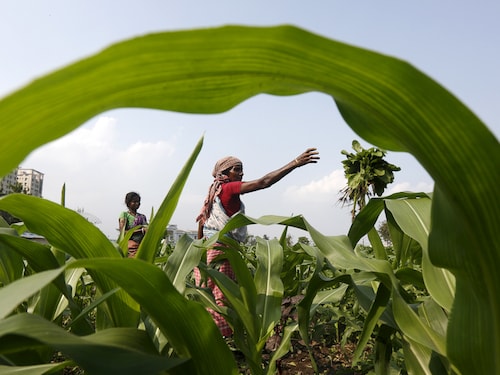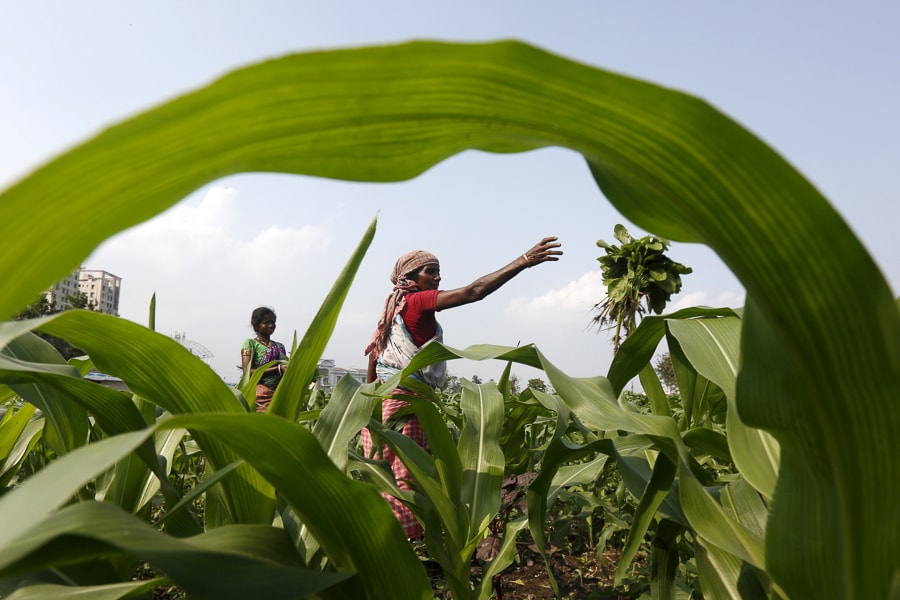Budget 2020: A wealth of common sense
Why Nirmala Sitharaman wants wealth-creation needs to percolate beyond city-slickers to the grassroots


 Image: Arko Datta / Reuters"‹[br]Before the onset of economic liberalisation in the early 1990s, wealth was a four-letter word, and its creators looked upon with suspicion and even contempt. Post-economic reforms, as more companies visited Dalal Street to raise capital from small investors and more first-generation entrepreneurs started up, more Indians prospered. As a result, wealth-creation suddenly wasn’t such a bad thing—and not the sole preserve of (old)-moneyed fat cats.
Image: Arko Datta / Reuters"‹[br]Before the onset of economic liberalisation in the early 1990s, wealth was a four-letter word, and its creators looked upon with suspicion and even contempt. Post-economic reforms, as more companies visited Dalal Street to raise capital from small investors and more first-generation entrepreneurs started up, more Indians prospered. As a result, wealth-creation suddenly wasn’t such a bad thing—and not the sole preserve of (old)-moneyed fat cats.
Yet, wealth-creation for most of the past three decades has been an urban, city-slicker aspiration. True, the equity cult and the startup culture has now permeated smaller towns but it was rare to talk about wealth-creation and the rural sector in the same breath.
The Finance Minister’s two-hour-42-minute budgetary opus won’t be enough for immediate benefits in job creation, consumption and private investments. Perhaps only a miracle would have enabled that, and finance ministers don’t possess capabilities of the divine.
What this budget has managed to do—in tandem with Friday’s Economic Survey—is to unabashedly link rural and agri focus with wealth creation. When Nirmala Sitharaman invoked the kurals, or couplets, of Tamil poet and philosopher Thiruvalluvar to underscore the significance of wealth and respect for its creators, she was only reinforcing her proposals aimed at India’s farmers and rural residents, who need better irrigation facilities, sanitation, education and skills, and health care.
Sitharaman relied on the phrase ‘Aspirational India’, a synonym for rural and agri-dependent India. The proof of the harvest is in the allocation for it, and the FM did not disappoint by allocating Rs2.83 lakh crore for 2020-21 for agriculture and allied activities, irrigation and rural. Rs1.60 lakh crore of this is for agriculture and allied activities. That’s higher than the 2019-20 crore proposed investment of Rs1.52 lakh crore, which was a 75% jump from the allocation in the interim budget. Sitharaman reiterated her government’s promise of doubling farm incomes by 2022.
To be sure, agri and rural has been the focus for the NDA government for the past couple of years, partly for electoral gains. But it was also the severe farmer strife that prompted Sitharaman to talk about the “gaon, garib aur kisan” in her maiden budget speech and extending the ‘ease of doing business’ and ‘ease of living’ to farmers, too. On Saturday, Sitharaman reiterated her government’s promise of doubling farm incomes by 2022.
Now tie this in with the chapter titled ‘Entrepreneurship and Wealth Creation at the Grassroots’ in the Economic Survey. “Entrepreneurship at the bottom of the administrative pyramid—a district—has a significant impact on wealth creation at the grassroot level,” note the authors. This, in turn, means several things that those in urban havens of poster boys and poster girls take for granted: Literacy and education, essential fuel to foster local entrepreneurship. And government initiatives that are assumed to be targeted at big business are as critical in rural India. For instance, policies that enable ease of doing business and flexible regulation enable new firm creation, especially in manufacturing, note the authors of this chapter. And the manufacturing sector has the greatest potential to create jobs for the youth.
For long, stock markets have tended to react poorly to rural-focused budgets. One argument of privileged economists is that it is not the business of governments to be concerned about individual welfare. It is because of such expenditure that we (including the rich and superrich) pay high taxes, which, in turn, leaves less money in our hands to fuel consumption. That seems logical on paper, but not in a country where the top 10% control 77% of the national wealth.
The upshot is simple: we need more Indians to be creating that wealth. And if governments can —after nearly three decades of economic reform—play a role in that endeavour, amen to that.
First Published: Feb 01, 2020, 16:52
Subscribe Now